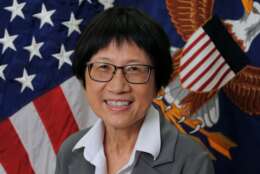Defense News
-
When a part is needed for a plane in the Air Force, it usually comes through the 448th Supply Chain Wing in the Air Force Sustainment Center. Ensuring that all those parts get to their destinations, and that they are not tampered with or sabotaged, calls for a good deal of risk management.
October 27, 2021 -
While they are supposed to takeover some menial tasks and do some jobs better than actual employees, DoD personnel leadership doesn’t see it making an impact on how many civilian workers the Pentagon maintains. At least not yet.
October 26, 2021 -
New study, published this month in the journal Health Sciences Research, projected worse health outcomes for DoD beneficiaries even if as few as 10% of them were shifted to private-sector care.
October 25, 2021 -
Heidi Shyu, the new undersecretary of Defense for research and engineering, says one of her first tasks is to develop a clear picture of what DoD's innovation offices are working on, and share those technologies throughout the department.
October 25, 2021 -
In the last year, the Army said its "People Strategy" led to major gains in recognizing the value of its civilian workforce, spurring recruitment and career development.
October 22, 2021 -
As choices are examined and strategies perfected about Cloud Migration in the greater National Capital Region, one of the many federal-government spaces where important decisions are being executed is within the office of the Army CIO.
October 21, 2021 -
DoD wants all of its civilians to get the shot and go through the required waiting period for antibodies to flourish by Nov. 22.
October 21, 2021 -
Jimmy Smith, the director of the Office of Small Business programs for the Department of the Navy, said the service awarded more than $17 billion in prime contracts to small firms in fiscal 2021.
October 21, 2021









